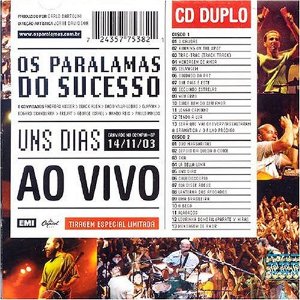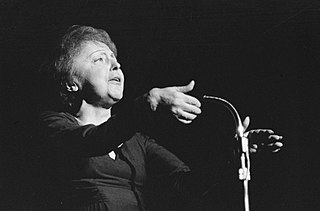
Titãs & Paralamas Juntos ao Vivo is a live album by Brazilian rock bands Titãs and Os Paralamas do Sucesso recorded and released in 1999. It features hits from both bands, an interview with both band members and the label's jingle. It's Titãs' third live album and Paralamas' fourth. it also marks the second time both bands perform together, the first being in the 1992 edition of Hollywood Rock.

O Passo do Lui is the second studio album by Brazilian rock band Os Paralamas do Sucesso. It was released in 1984, and it was the album that increased the Paralamas' popularity all over Brazil, with hits such as "Ska", "Meu Erro", "Me Liga" and "Romance Ideal". The album's name is a homage to Lui, a friend of the Paralamas who, according to them, is a good dancer. Lui is also depicted on the front cover.

Selvagem? is the third studio album by Brazilian rock band Os Paralamas do Sucesso. It was released in 1986. "Você" is a cover of Tim Maia. Commenting on the track "Selvagem" in 2013, amidst the 2013 protests in Brazil, bassist Bi Ribeiro said he was impressed that the song was still in harmony with Brazilian conjuncture.

Felipe de Nóbrega Ribeiro, better known as Bi Ribeiro is a bass player.

Os Grãos is the sixth studio album by Brazilian rock band Os Paralamas do Sucesso. It was released in September 1991.

Arquivo was Os Paralamas do Sucesso's first compilation album released in 1990. It contains the unrecorded song Caleidoscópio (Kaleidoscope) and its remastering of its greatest hit Vital E Sua Moto

Cinema Mudo is the debut album by Brazilian rock band Os Paralamas do Sucesso. It was released in 1983 to critical acclaim, selling more than 90,000 copies.

D is the first live album released by brazilian rock band Os Paralamas do Sucesso at the Montreux Jazz Festival in Switzerland.

Severino is the seventh studio album by Brazilian rock band Os Paralamas do Sucesso. It was released in 1994 and produced by famous record producer Phil Manzanera. It was their most experimental album.

9 Luas is the eighth studio album by Brazilian rock band Os Paralamas do Sucesso, released in 1996. With this album, the Paralamas definitely abandon their previous new wave/ska/reggae rock style and adopt a more pop rock sonority, however without abandoning the Latino influences.

Rock in Rio 1985 is the fifth live album by brazilian rock band Os Paralamas do Sucesso at the Rock in Rio in Rio de Janeiro, Brazil. Rock in Rio, more than an album is also one of the biggest music festival in the world. So far, Rock in Rio have been in four countries: Brazil, Spain, Portugal and USA.

Acústico MTV is the third live album released by brazilian rock band Os Paralamas do Sucesso at the Parque Lage, in Brazil.

Hey Na Na is the ninth studio album by Brazilian rock band Os Paralamas do Sucesso. It was released in June 16, 1998. Main hits of the album include "Ela Disse Adeus" and "O Amor Não Sabe Esperar".

Bora Bora is the fourth studio album by Brazilian rock band Os Paralamas do Sucesso, being released in February 1988. Characterized by a tropical, Caribbean-esque instrumentation, the main hits of the album include "O Beco", "Uns Dias" and "Quase um Segundo". It sold more than 20,000 copies in Europe.

Uns Dias Ao Vivo is the fifth live album by Brazilian rock band Os Paralamas do Sucesso at the Olímpia, São Paulo.

Big Bang is the fifth studio album by Brazilian rock band Os Paralamas do Sucesso. It was released in November 20, 1989.

Arquivo II is the second compilation album by brazilian rock band Os Paralamas do Sucesso.

The 2008 MTV Video Music Brazil was hosted by Marcos Mion and took place at the Credicard Hall. Brazilian rock band NX Zero was the big winner of the event. One of the most notable moments was British indie rock band Bloc Party's performance, during which the audience booed the band after noticing they were lip-synching and mimicking to a pre-recorded track instead of singing and playing live. 2008 VMB also had American singer Ben Harper opening the ceremony performing alone, before being joined by Brazilian singer Vanessa da Mata for a second performance.

























